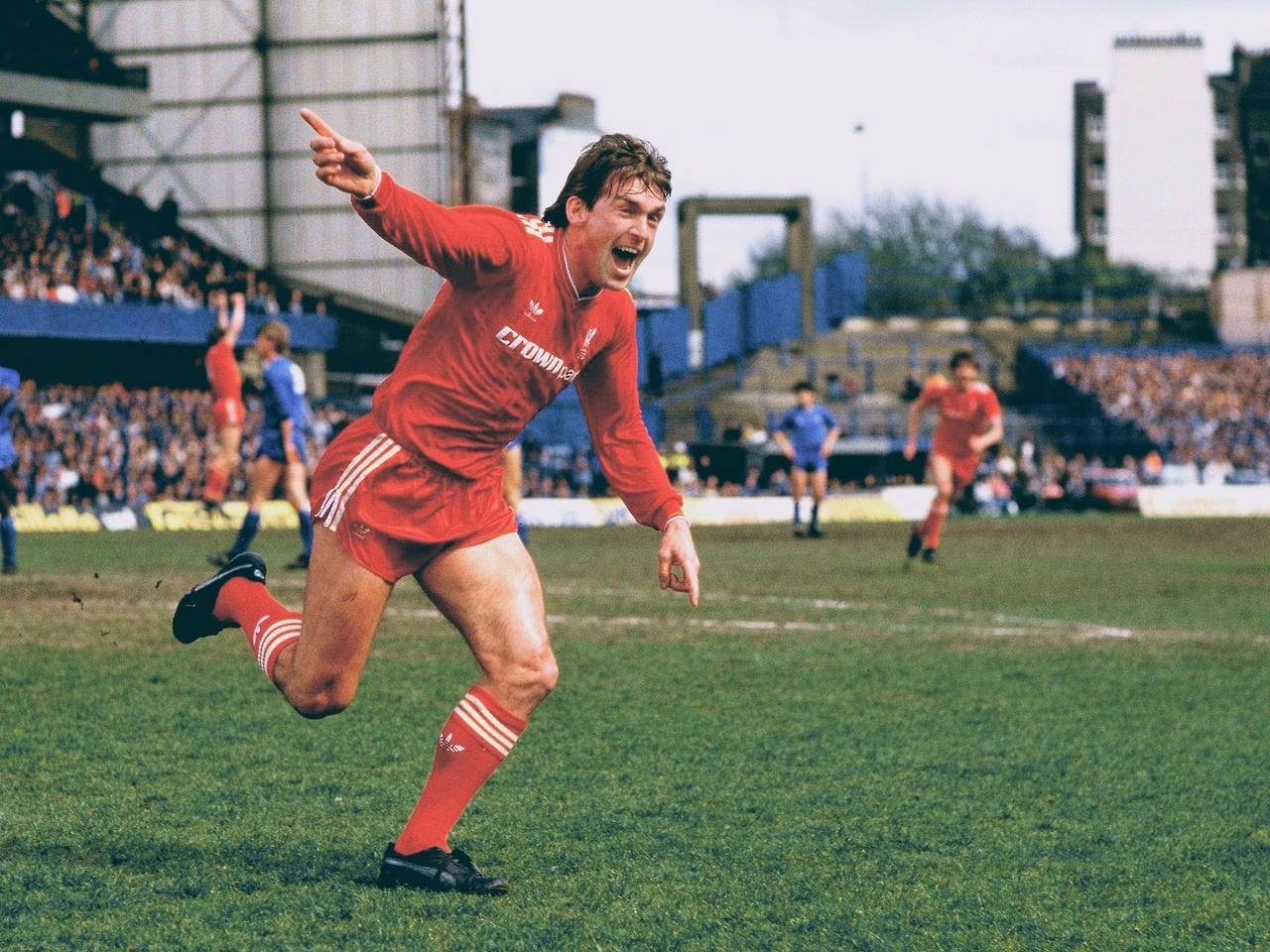And Could He Play - Sir Kenny Dalglish
Liverpool’s Eternal Flame of Footballing Genius
Some moments in football capture something far greater than the game itself. For me, that moment comes just before 4:45pm on 3 May 1986 at Stamford Bridge. Kenny Dalglish, player-manager of Liverpool, cushions the ball on his chest, deftly guides it with the outside of his right foot, and slots it past Tony Godden in the Chelsea goal. It is the only goal of the game. It wins Liverpool the league. And it epitomises everything about Dalglish, the composed technician, the big-game player, and the visionary leader.
Then, with arms outstretched and a smile wide enough to stretch across the capital, he celebrates, just for ten seconds, before the familiar Glaswegian seriousness returns. It is that duality that defines him. The joyful inner child who loved the game, and the stern, no-nonsense professional who carried the weight of a club like no other. I know that version well. I have been lucky enough to experience both sides of Kenny.
Knowing Kenny: The Measure of the Man
Over the past few years, through our work on the King & AI podcast for Anfield Index, I have come to know Kenny personally. And though it still feels surreal to say that as a kid who idolised him, those conversations, often about far less glamorous things like tech glitches or forgotten passwords, have only deepened my admiration for him.
They say never meet your heroes. But Kenny proved to me how false that is. His warmth, humility, and sharp sense of humour off the mic contrast beautifully with the steely determination that marked his playing and managerial days. When he calls, you do not feel like you're speaking to a knight of the realm. You are speaking to Kenny. He keeps it simple, but you never forget who you're talking to.
From Glasgow to Greatness
To fully appreciate the greatness of Sir Kenny Dalglish, you have to begin not at Anfield, but in the tenement streets of Glasgow, where football wasn’t a lifestyle choice but a birthright. Raised in Dalmarnock as a Rangers supporter, young Kenny could scarcely have imagined that his path to glory would begin not in blue, but in the green and white hoops of their fiercest rivals.


